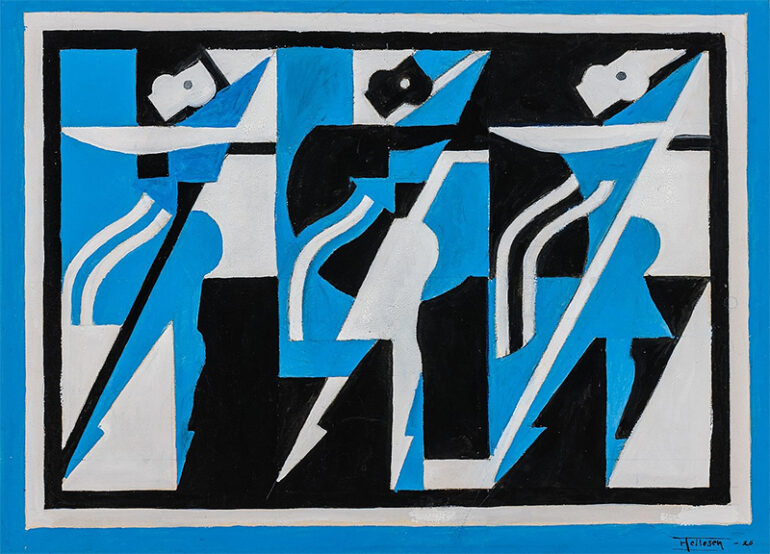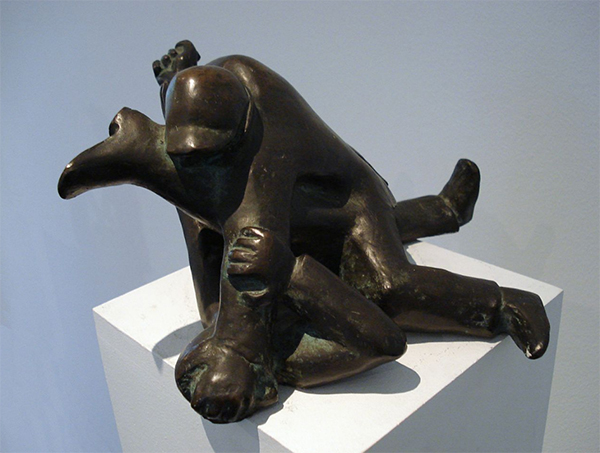The art world has a rich history of embracing geometric abstraction, which can be traced back to the influential Cubist movement of the early 1900s. The artistic movement known as Cubism, which was spearheaded by the brilliant minds of Pablo Picasso and Georges Braque, completely transformed the approach that artists took towards representation. This groundbreaking style involved the deconstruction of subjects into various geometric shapes, resulting in a truly innovative and captivating visual experience. In the present day, artists persistently delve into the depths of this particular aesthetic, pushing the limits of geometric abstraction with exhilarating and groundbreaking approaches. This piece will delve into various contemporary methods of geometric abstraction and their progression from the Cubist era.
Deconstruction and reconstruction
The deconstruction of subjects into geometric shapes was a fundamental aspect of Cubism. Contemporary artists have pushed the boundaries by not only dismantling subjects but also reassembling them in fresh and surprising manners. Through the manipulation and reorganization of geometric shapes, artists craft vibrant arrangements that defy conventional ideas of depiction. By adopting this method, one can explore a novel perspective of existence, encouraging spectators to immerse themselves in the artwork at a profound magnitude.
Color and texture
Although Cubism initially emphasized form and structure, contemporary artists have broadened the realm of geometric abstraction by integrating color and texture into their artistic creations. Through the exploration of vivid colors and diverse mediums, artists bring a fresh perspective to their artistic creations. The incorporation of various hues and patterns not only amplifies the visual allure of the artwork but also introduces a profound sense of sentiment and intricacy. The combination of abstract forms with vibrant hues and textured finishes produces a mesmerizing visual encounter for the observer.
Digital geometric abstraction
The emergence of digital technology has opened up fresh opportunities for artists to delve into the realm of geometric abstraction. The utilization of digital tools provides artists with the ability to meticulously modify forms, hues, and surfaces, thus empowering them to craft elaborate and intricate arrangements. Artists now have limitless opportunities to explore geometric abstraction in the digital world, thanks to the utilization of algorithms and computer-generated imagery. The contemporary method of geometric abstraction merges the boundaries of conventional artistic expressions and technological advancements, resulting in a distinctive amalgamation of past and present elements.
Geometric abstraction in sculpture
Three-dimensional artworks have embraced geometric abstraction, extending beyond the boundaries of two-dimensional pieces. Creators have enthusiastically adopted the utilization of geometric shapes and constructions to produce sculptures that defy traditional spatial norms. Through the skillful manipulation of various elements like metal, wood, and glass, sculptors craft exquisite and captivating artworks that beckon observers to delve into the dynamic relationship between shape, emptiness, and illumination. Sculptures that incorporate geometric abstraction bring a unique dimension to the art form, engaging the audience’s senses in a truly immersive way.
Conclusion
The influence of the Cubist movement has given rise to geometric abstraction, which remains a constant source of inspiration and fascination for contemporary artists. By dismantling, rebuilding, incorporating vibrant hues and tactile elements, exploring the digital realm, and pushing the boundaries of sculpture, artists have revolutionized this genre with captivating and groundbreaking approaches. The progression of geometric abstraction mirrors the constant flux of art, with artists continuously challenging conventional depictions and encouraging viewers to delve into their creations on a more profound plane. It will be truly captivating to witness the ongoing evolution of geometric abstraction in the art world, as artists explore fresh perspectives and push the boundaries of this ageless artistic expression.
1st & featured image from https://commons.wikimedia.org/wiki/Category:Cubist_paintings#/media/File:Thorvald_Hellesen_-_komposisjon.jpg
2nd image from https://commons.wikimedia.org/wiki/Category:Cubist_sculpture#/media/File:Otto_Gutfreund_(Rvaci).jpg

